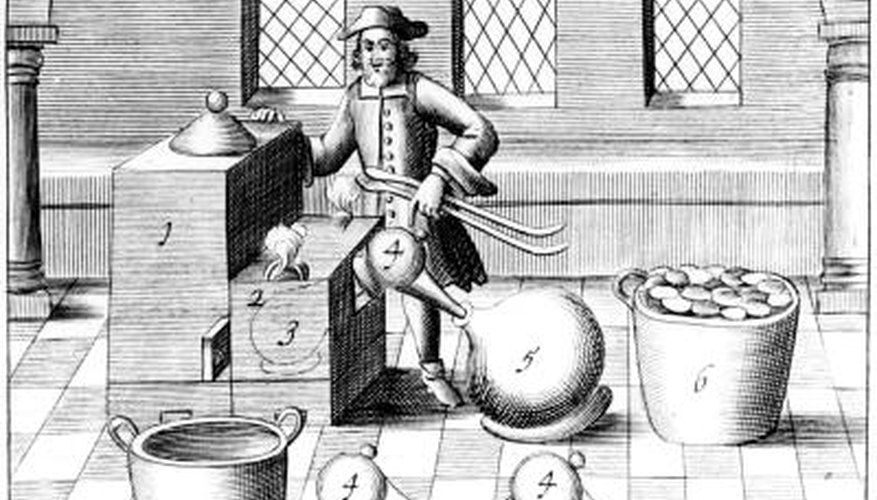In simple distillation, a mixture of liquids is heated to the temperature at which one of its components will boil, then the vapour from the hot mixture is collected and recondensed into liquid. This process is fast and relatively straightforward, but there are many kinds of mixtures that cannot be separated this way and require a more advanced approach.
Impurities
Since the mixture in simple distillation is only boiled and recondensed once, the final composition of the product will match the composition of the vapour, which means it may contain significant impurities. The closer the boiling points of the liquids in the mixture, the more impure the final product will be. Consequently, simple distillation is typically used only if the boiling points of the mixture's components are separated by at least 25 degrees Celsius. Mixtures with closer boiling points can be separated through fractional distillation.
- Since the mixture in simple distillation is only boiled and recondensed once, the final composition of the product will match the composition of the vapour, which means it may contain significant impurities.
Azeotropic Mixtures
In some cases mixtures of liquids may be so constituted that, when boiled, their vapour has the same composition as the mixture itself. These are called azeotropes. Ethanol is perhaps the most often-cited example; a mixture of 95.6 per cent ethanol and 4.4 per cent water will actually boil at a lower temperature than either ethanol or water. Consequently, simple distillation cannot change this mixture's composition. Azeotropic mixtures cannot be separated by fractional distillation either and typically require other approaches.
- In some cases mixtures of liquids may be so constituted that, when boiled, their vapour has the same composition as the mixture itself.
- Ethanol is perhaps the most often-cited example; a mixture of 95.6 per cent ethanol and 4.4 per cent water will actually boil at a lower temperature than either ethanol or water.
Energy Consumption
Heating a liquid or a mixture of liquids to boiling takes a lot of energy. If this energy is generated by burning fossil fuels, it will increase carbon emissions and possibly make the process more expensive. Considerable fossil fuel inputs, for example, are required to distil ethanol. In the lab, simple distillation is often carried out with a device called a rotovap, which applies vacuum to reduce the boiling point of a mixture. For large quantities of chemicals, however, this kind of approach is less practical.
- Heating a liquid or a mixture of liquids to boiling takes a lot of energy.
- In the lab, simple distillation is often carried out with a device called a rotovap, which applies vacuum to reduce the boiling point of a mixture.
Chemical Reactions
Heating a mixture to boiling point could cause undesirable chemical reactions to occur, which may be a problem if you are trying to isolate a specific product. If you reacted fresh hydrogen bromide with butadiene at 0 degrees, for example, you would get a mixture that contained more 3-bromo-1-butene than 1-bromo-2-butene. Heating the mixture, however, would cause another reaction to occur, changing the composition of the mixture so that now you would have more 1-bromo-2-butene than 3-bromo-1-butene -- which might be a disadvantage if you really wanted more of the latter. Moreover, some compounds may be heat-sensitive. Heating a mixture containing nitroglycerine (dyanmite), for example, would be a very unwise idea.
- Heating a mixture to boiling point could cause undesirable chemical reactions to occur, which may be a problem if you are trying to isolate a specific product.
- Heating the mixture, however, would cause another reaction to occur, changing the composition of the mixture so that now you would have more 1-bromo-2-butene than 3-bromo-1-butene -- which might be a disadvantage if you really wanted more of the latter.
